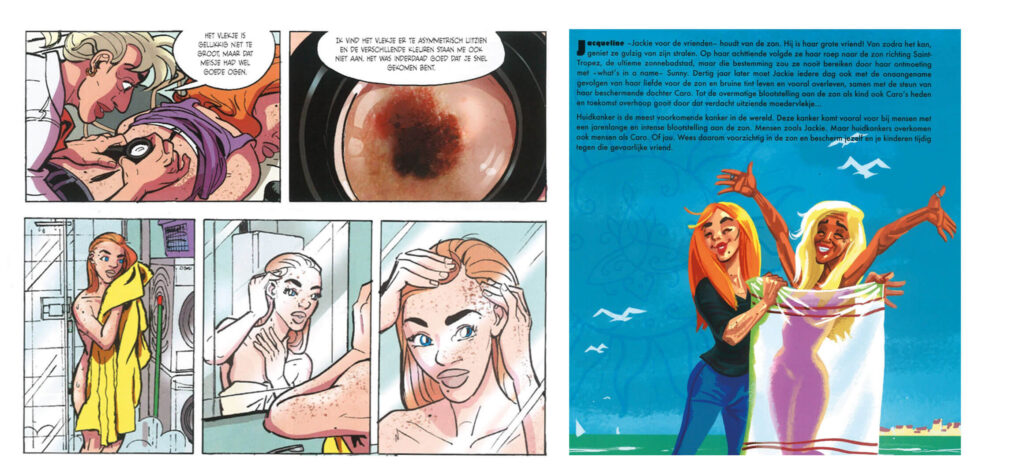Despite severe sunburn at a young age increasing the risk of skin cancer in later life, young people in Belgium are dangerously unaware of the need to protect their skin. A campaign now aims to rectify this via social media and cartoons.
45,642 new skin cancers were diagnosed in Belgium in 2019 but a recent survey of 1,250 Belgians commissioned by Euromelanoma, a pan-European campaign for skin cancer prevention, showed that just 16% of Belgians know what to for when checking their skin for dangerous marks.
Among 16- to 25-year-olds, this figure is as low as 11%. Meanwhile, 21% of young people say they have suspicious spots but do nothing about them.
For Euromelanoma's 24th international prevention campaign, the network of dermatologists is turning its attention on young people.
Check from head to toe
With the slogan "Are you using protection?", Belgian dermatologists are now calling on young people to better protect their skin from the sun and to check regularly for "suspicious spots."
"The goal is for people to check themselves from head to toe every month or every two months. After all, the skin is the only organ we can see for ourselves," dermatologist Thomas Maselis of Euromelanoma said.

An example of the graphic novel. Credit: Euromelanoma
Euromelanoma wants to reach young people through social media, schools and a graphic novel titled 'Sunny Side Up! The sun, a dangerous friend', which will appear in Dutch and French. It features a tattoo artist who discovers a suspicious spot on the main character.
Dermatologists also want people who see a lot of skin, such as physiotherapists and nurses, as well as beauticians and tattooists, to better understand what spots are dangerous, so they can help inform people.
Related News
- Cancer vaccines may be available within 7 years, says Moderna
- Breast cancer patients treated in unaccredited clinics face higher risk of dying
The campaign shows how people should check their skin and what skin cancer and suspicious skin lesions look like through various images and examples, including red, scaly patches, wounds that do not heal and erratic pigmentation spots.
Anyone checking pigment spots should keep the ABCDE rule in mind, which refers to an asymmetrical shape ('asymmetry'), an uneven border ('border'), different colours ('colour'), a diameter larger than six millimetres ('diameter') and a certain growth of the spot ('evolution').

